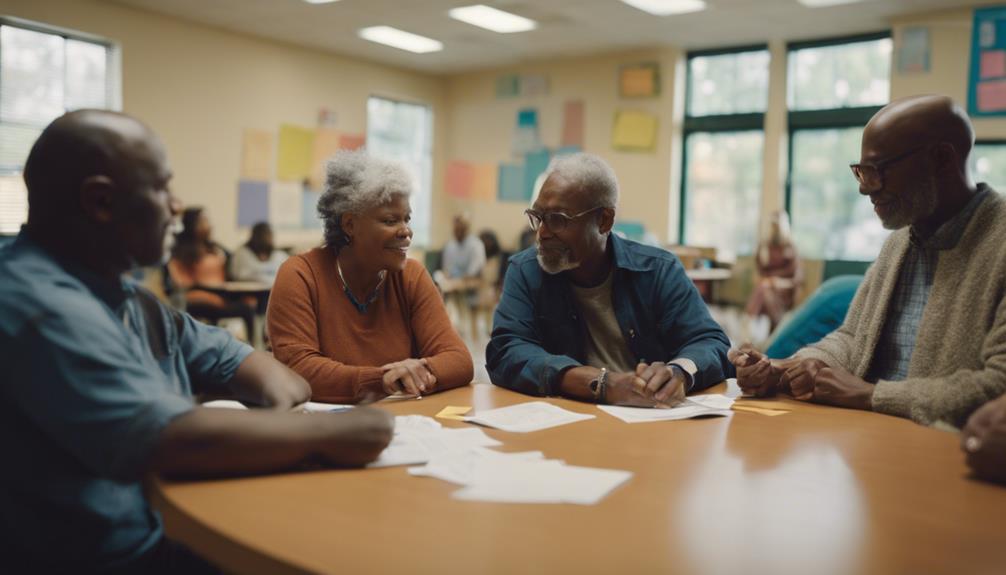
Medicaid, the cornerstone of health coverage for millions of Americans, often sparks curiosity about its future. Amidst debates, discussions, and changing political landscapes, many wonder: when will Medicaid end? While it may seem like a daunting question, it’s vital to explore the possibilities and ponder the journey ahead. Let’s dive into this vibrant topic with a cheerful lens, navigating through hopeful speculation and the realities of healthcare in the U.S.
1. The Future of Medicaid: What’s in Store for Us?
As we peer into the crystal ball of healthcare, it’s clear that Medicaid is not going anywhere anytime soon! With significant support from advocacy groups and communities, Medicaid is poised to adapt and evolve rather than vanish. Innovations in technology, telemedicine, and new care models are paving the way for a more robust system that addresses the needs of diverse populations. This adaptability suggests that Medicaid will continue to thrive and flourish, meeting the dynamic needs of its beneficiaries.
Looking ahead, the potential for expansion is bright. With ongoing discussions around universal healthcare and improved access to services, Medicaid may even see enhancements in coverage, reaching more individuals and families. The future appears promising as we embrace creativity and collaboration to ensure that this essential program remains a staple in American healthcare for generations to come!
2. Will Medicaid Ever Say Goodbye? Let’s Explore!
The idea of Medicaid saying goodbye can feel alarming, but let’s unpack what that truly means. With political discussions swirling around the healthcare sector, it’s essential to understand that Medicaid has become a fundamental part of the fabric of American health policy. The program has weathered numerous political storms, often emerging stronger and more comprehensive. It’s hard to imagine a healthcare landscape without it, as Medicaid provides critical support to vulnerable populations, including low-income families, children, pregnant women, and individuals with disabilities.
Moreover, Medicaid has garnered a loyal following of advocates and beneficiaries who champion its vital role in ensuring access to healthcare. The dedication of these supporters means that any changes to the program will likely be met with fierce resistance, ensuring that it remains a priority on the national agenda. So, while the idea of Medicaid ending might spark a moment of concern, the reality is far more reassuring—this program is here to stay, with a vibrant future ahead!
3. Navigating Changes: The Journey of Medicaid Ahead
Every great adventure comes with its share of changes, and Medicaid’s journey is no exception! As we navigate through shifting policies and evolving healthcare needs, it’s important to remember that change can often lead to improvement. The past few years have seen significant transformations in Medicaid delivery, with a focus on value-based care and integrated services. By embracing these changes, Medicaid is enhancing its ability to provide comprehensive services that prioritize health outcomes for its beneficiaries.
As we look towards the horizon, we can expect the journey of Medicaid to continue evolving alongside advancements in healthcare technology and patient care models. The emphasis on mental health, preventative care, and personalized medicine is anticipated to grow, ensuring that Medicaid remains a responsive and relevant program. With these navigational tools in place, beneficiaries can feel confident that their healthcare will adapt and improve amidst the changes.
4. Medicaid’s Lifespan: A Look at Its Bright Future
If Medicaid were a plant, it would be a resilient and flourishing perennial! Established in 1965, this program has shown remarkable longevity and adaptability. Rather than facing extinction, Medicaid has proven to be a survivor, weathering political changes and responding to the evolving needs of the population. The continued focus on inclusivity and access positions Medicaid favorably for a bright future, where it can better serve the communities that rely on it.
The future of Medicaid also shines with the promise of partnerships and community engagement. By working closely with healthcare providers, advocacy groups, and local organizations, Medicaid is set to strengthen its foundation and expand its reach. As new generations of beneficiaries enter the system, the emphasis on accessibility, equity, and quality of care will ensure that Medicaid remains a vital lifeline for countless Americans long into the future.
5. What If Medicaid Ends? Dreaming Up New Possibilities!
While pondering the hypothetical scenario of Medicaid ending, let’s unleash our imagination and dream up new possibilities! If Medicaid were to transform or take a new direction, it could pave the way for innovative healthcare models. Picture a world where every American has access to a personalized health plan that meets their unique needs. Perhaps we would see a shift toward more community-based healthcare initiatives that empower individuals to take control of their health outcomes.
However, this imaginative exercise also reinforces the importance of safeguarding Medicaid as it stands. The lessons learned from the current program could inspire new ideas and frameworks, ensuring that we build on the successes of Medicaid while addressing gaps in care. Ultimately, the dream of an improved healthcare system can coexist with the reality of Medicaid’s crucial role, fostering a collaborative spirit that embraces change and progress.
6. Medicaid Unplugged: The Myths and Realities Revealed
Let’s turn up the volume and tune into the myths and realities surrounding Medicaid! One common misconception is that Medicaid is a program solely for the poor. In truth, Medicaid covers a diverse range of individuals, including working families, children, and seniors. By shining a light on these realities, we can better appreciate the program’s scope and impact on communities across the nation.
Moreover, many people think that Medicaid is a “one size fits all” solution. In reality, Medicaid is highly customizable, with each state having the autonomy to tailor its program to meet local needs. This flexibility allows states to innovate and implement unique strategies that address specific health challenges. By debunking these myths, we can foster a deeper understanding of Medicaid’s vital role and the many forms it can take to serve our diverse population.
7. Countdown to Change: When Might Medicaid Transform?
The countdown to change is an exciting one, as opportunities for improvement and innovation in Medicaid are always on the horizon! With the ongoing discussions about healthcare reform, it’s challenging to pinpoint an exact moment when Medicaid might transform. However, we can anticipate that the next few years will bring vital discussions around funding, coverage expansion, and integration of services that could reshape the way Medicaid operates.
As new policymakers take office and public health challenges emerge, the urgency for reform may catalyze changes that better align Medicaid with the needs of its beneficiaries. The countdown is not just about “when” change will occur, but also about how we can collectively advocate for improvements that enhance access and quality of care. By participating in this dialogue, we can help ensure that Medicaid continues to evolve in a way that benefits all Americans.
8. Is Medicaid Forever? A Whimsical Outlook on Health!
Is Medicaid forever? Let’s take a whimsical leap into the world of possibilities! While it’s impossible to predict the future with absolute certainty, we can imagine a scenario where Medicaid evolves but continues to thrive in some form. Perhaps it will merge with new health initiatives or transform into a universal coverage system, but the core mission of ensuring access to healthcare for all will remain intact. The spirit of Medicaid, much like a beloved storybook character, will adapt and grow, but its essence will remain.
In a world where healthcare is a universal right, Medicaid could serve as an inspiration for other health programs across the globe. This whimsical vision encourages us to dream big while understanding the importance of Medicaid’s current role. If we allow ourselves to think outside the box, we can envision a future where healthcare is equitable and accessible, grounded in the values that Medicaid embodies today.
9. The Great Medicaid Debate: Endings or New Beginnings?
The great Medicaid debate is a vibrant conversation that encapsulates both endings and new beginnings! As discussions around healthcare reform gain momentum, stakeholders grapple with the delicate balance between preserving the program as it is and exploring new models that might improve its effectiveness. The debate is often filled with passionate arguments, uncovering the need for change while celebrating the successes that have made Medicaid a lifeline for millions.
Amidst this spirited dialogue, it’s crucial to recognize that every ending paves the way for new beginnings. The challenges faced by Medicaid can inspire innovative solutions that breathe new life into healthcare delivery. By focusing on collaboration, data-driven decisions, and community engagement, the Medicaid debate can lead to transformative changes that enhance health outcomes for everyone. It’s a thrilling time for healthcare, and the possibilities are as limitless as our imaginations!
10. Medicaid’s Next Chapter: Embracing Change with Joy!
As we turn the page to Medicaid’s next chapter, we embrace change with joy and optimism! This program has shown remarkable resilience, adapting to the needs of its beneficiaries and the evolving healthcare landscape. With the spirit of innovation and collaboration, Medicaid is ready to embark on a journey filled with exciting opportunities for improvement and accessibility.
The future is filled with promise as we seek to enhance Medicaid’s role in the lives of millions. By championing initiatives that prioritize health equity, digital health solutions, and comprehensive care models, we can create a tapestry of support that uplifts communities. Together, we will celebrate Medicaid’s legacy while nurturing its growth, ensuring that it remains a vital resource for generations to come. Let’s embrace this journey with excitement and hope!
In conclusion, while the question of when Medicaid will end may linger in the air, the reality paints a much brighter picture. With ongoing advocacy, community support, and a commitment to adaptation, Medicaid is poised to continue its vital mission of providing healthcare coverage for millions. As we navigate the future together, we remain hopeful, creative, and ready to embrace the changes that lie ahead. So let’s keep the conversation alive, celebrate the successes, and work towards a healthcare system that serves all with joy and dignity!




